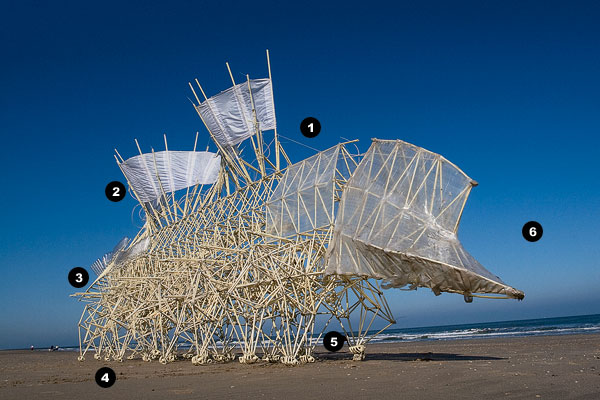
A Dutch artist who was trained as a physicist, Theo Jansen, 67, has spent the last 25 years perfecting the design of his Strandbeests (loosely translated, the name means “beach creatures”). Propelled by wind, these kinetic sculptures—eight of which will be on view at the Chicago Cultural Center starting February 6—look like graceful, skeletal animals. “You see an animal walking, but you also see a bunch of tubes,” says Jansen. “It’s unreal.”
1. Color
The Strandbeests start out “the color of cheese,” says Jansen. But over time, the sun bleaches the tubes. The earliest sculptures (now 25 years old) are a shade of bone.
2. Sails
Most Strandbeests have between four and six sails, which power crankshafts that move the legs. In high winds, the sculptures can walk up to six miles an hour.
3. Material
Designed to move on sand, Jansen’s sculptures are made primarily from hundreds of PVC tubes. He prefers PVC because it is lightweight and inexpensive.
4. Feet
Every Strandbeest is outfitted with “shoes” that allow it to maneuver over various beach terrains. The softer the sand, the bigger the shoes.
5. Legs
To build the legs, Jansen uses what he calls a “genetic algorithm,” an equation that determines the length and construction of each limb for maximum movement.
6. Size
Most Strandbeests measure about 16 feet long, 6.5 feet wide, and 10 feet high and weigh between 77 and 330 pounds.
GO Strandbeest: The Dream Machines of Theo Jansen runs February 6 to May 1 at the Chicago Cultural Center, 78 E. Washington St. cityofchicago.org


